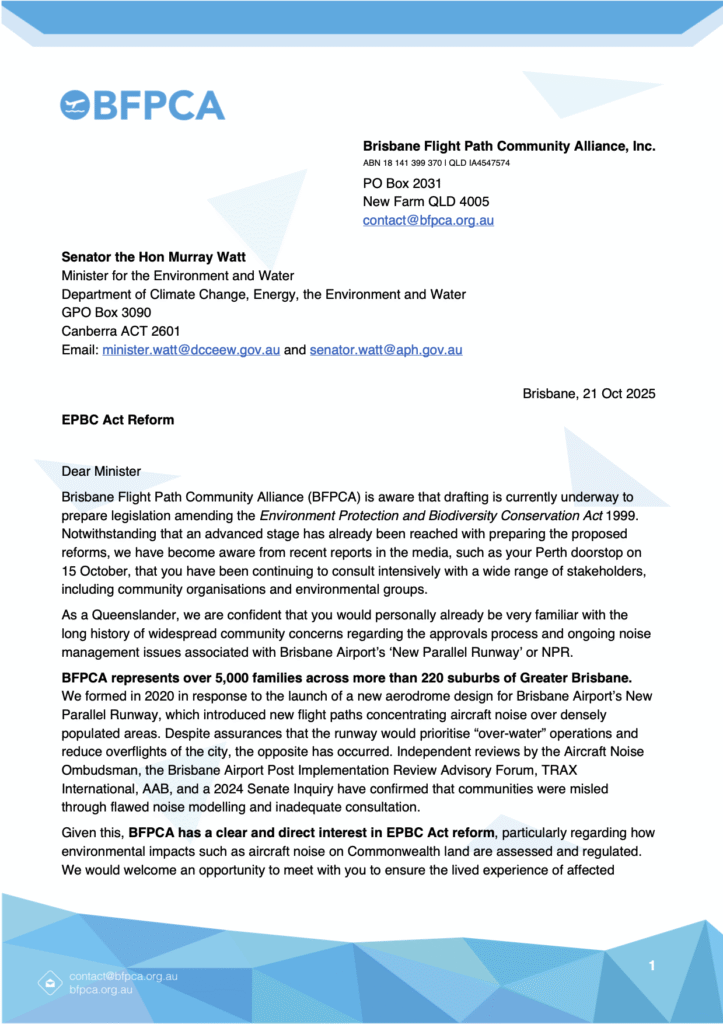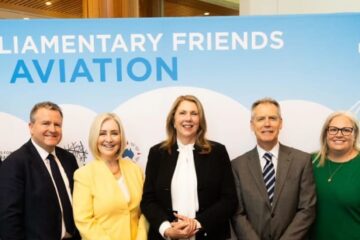21 October 2025
Brisbane Flight Path Community Alliance (BFPCA) has written to the Federal Minister for the Environment and Water, Senator the Hon Murray Watt, calling for critical changes to the Government’s proposed reforms to the Environment Protection and Biodiversity Conservation Act 1999 (EPBC Act).
The EPBC Act is Australia’s main environmental law. It sets out how major projects – including aiports and runways – are assessed for their environmental impacts. The Albanese Government is currently finalising a major rewrite of the Act, which they claim will improve environmental standards, streamline approvals, and strengthen accountability.
BFPCA’s letter argues that, for airports, there remains a serious gap in the law. Since 2006, airport developments on Commonwealth land have been assessed only through ministerial advice rather than a formal approval process. This means that false or misleading information provided by airport operators is not an offence, unlike in other environmental assessments.
BFPCA argues this loophole has had real consequences for Brisbane residents. When Brisbane Airport’s New Parallel Runway opened in 2020, new flight paths were introduced that concentrated aircraft noise over densely populated suburbs, despite assurances that “over-water” operations would reduce noise over the city. Independent reviews – including those by the Aircraft Noise Ombudsman, the Brisbane Airport PIR Advisory Forum, TRAX International, AAB, and a 2024 Senate Inquiry – have confirmed that communities were misled by flawed noise modelling and poor consultation.
“We’re asking the Minister to ensure the lived experience of Brisbane communities is reflected in the EPBC Act reforms,” said BFPCA Chair Professor Marcus Foth. “No other industry would be allowed to submit misleading information about environmental impacts without consequences. Airports shouldn’t be exempt.”
BFPCA has requested a meeting with Minister Watt to discuss how the reforms can restore accountability, transparency, and consistency in how environmental impacts – including aircraft noise pollution – are regulated on Commonwealth land.
Click the image below to read the full letter as a PDF:



